After a summer and autumn feeding inside the estuaries, the now peak condition flounder begin a slow migration seawards with eventual New Year spawning in mind. November onwards is the very best time to target a specimen sized shore flattie. For a more general view of flounder fishing, check out our Shore Fishing For Flounder blog here.
When to fish
The migration is very staggered, with some fish beginning to move out with the flood waters of November, with others holding in the deeper holes of the outer estuary channels during December and January before working their way on to the adjacent beaches. In late February/early March, it's not unusual to see individual peak conditioned flounder yet to head seawards alongside the first thin spawned out flounder returning inshore.
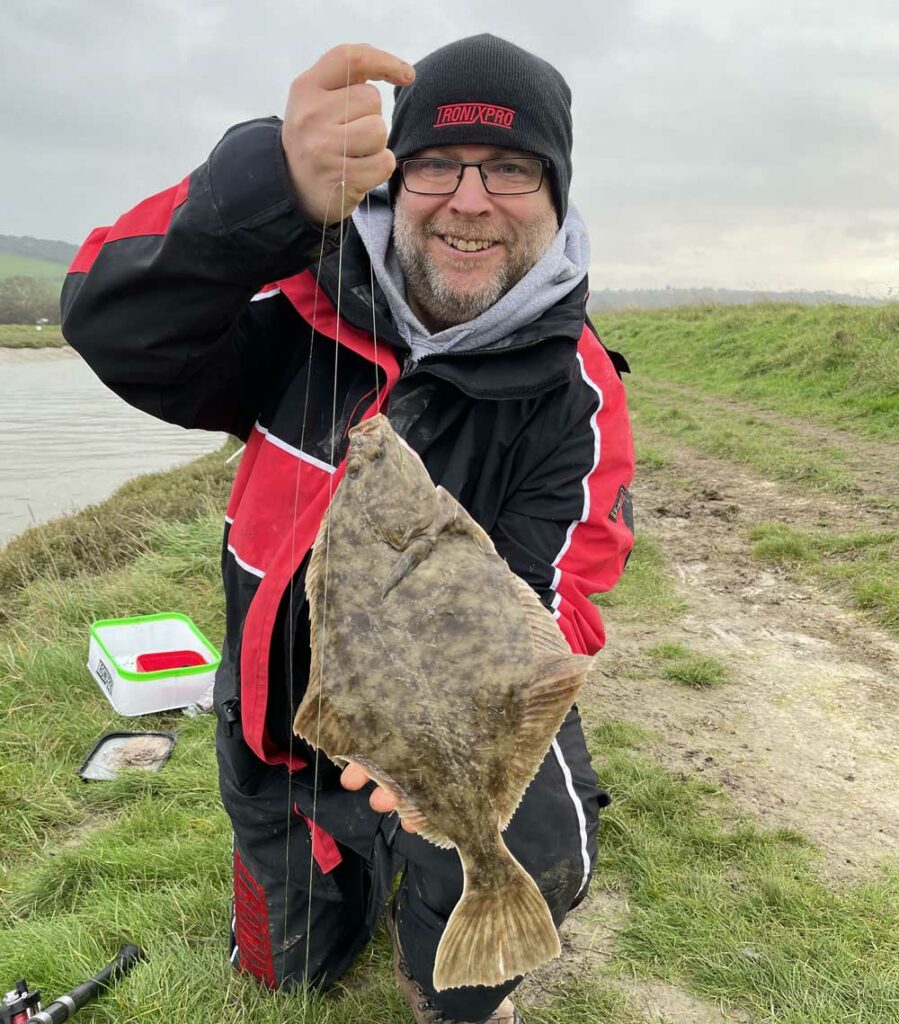
Where to fish
Pre mid-January, some bigger flounder will stay inside the estuaries and are found in the deeper parts of the estuary channels but moving ever closer to the outflow or bar. They move onto the shallower banks to feed as the tide floods in. They also favour any seed mussel beds and will be found tight to small areas of rougher ground where the sand line meets.
As they move out of the estuaries they will hold for a while on the open beaches and are typically taken from slightly deeper sandy gullies and gutters and will work tight to the tideline and right into the edge of the surf tables. Again, also look to fish close to small areas of rougher ground or mussel beds. They also like to sit in the washed-out holes that are typically found where there are posts in the sand or at the ends of groynes towards high water.
Weather and Tides
You will catch big flounder in calmer seas, but the biggest fish like the rougher weather and bigger surfs, especially seas just calming off after a good gale has gone through. They do, though, tend to stay outside the main surf line in the slightly deeper water, taking advantage of any undertow that drags food washed out of the sand back out to sea. They can be caught day or night, though night tides, especially those that see low water, start to flood in darkness, giving the best opportunities, especially on the shallower surf beaches.
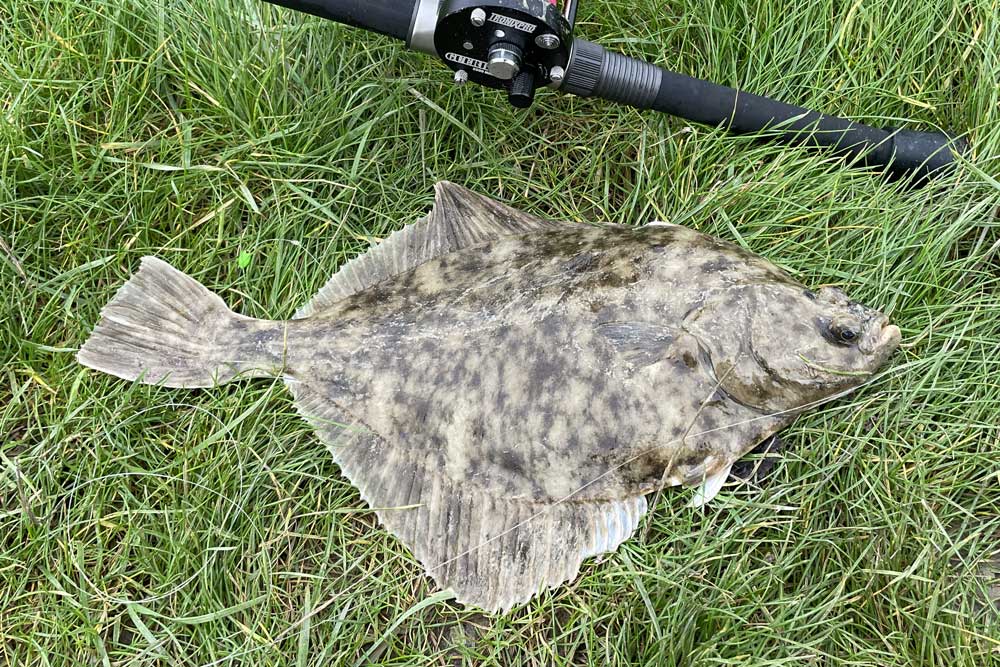
Most tide sizes can produce the good flatties, but mostly look to the bigger tides, especially those rising in height each consecutive day, as giving the best chance. Low water through to mid-tide is the optimum time, with the bigger fish less inclined to move to the high tide line areas, preferring the slightly deeper water at this time of year.
Tackle
Estuary fishing can still be done with the lighter rods rated for 2 to 5oz fishing around 12ft in length, the Tronixpro Banzai Bass rod is ideal. Add a 6000 sized fixed spool loaded with 20lb Tronixpro X8 Power Braid or 18lb mono and a 40lb leader, and you have balanced tackle. For the open beaches and bigger seas, look to rods in the 12 to 14ft length rated to cast up to 6ozs, such as the Xenon Match, Banzai Match or even the Banzai Light. Multiplier reels, like the Banzai Tournament Mono Mag loaded with 18/20lb Blaze Mono and a 60lb Xenon leader can be used, or an 8000 sized fixed spool reel, like the Banzai Surf LC carrying 30lb Power Braid and a 60/80lb braid shock leader.
-
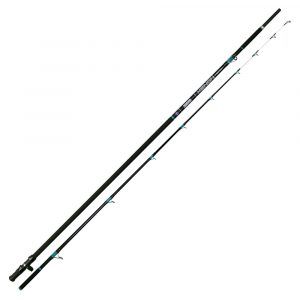 Tronixpro Xenon Match£229.99
Tronixpro Xenon Match£229.99 -
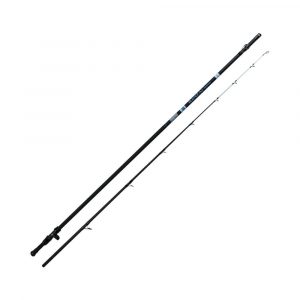 Tronixpro Banzai Match | 13′ | 3-6oz£179.99
Tronixpro Banzai Match | 13′ | 3-6oz£179.99 -
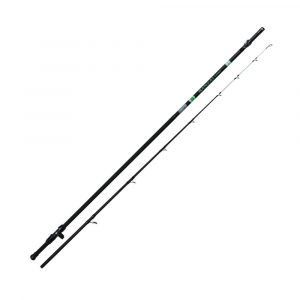 Tronixpro Banzai Light | 12'6″ | 2-5oz£159.99
Tronixpro Banzai Light | 12'6″ | 2-5oz£159.99
For the estuary and open beach, a 1 up/1 down rig works best for these bigger flatties.
- Start with 40-inches (102cms) of 60lb Xenon Leader.
- At one end, tie on a Tronixpro Casting Snap Link.
- Slide on a rig crimp, 3mm bead, a size 6 rolling swivel, another 3mm bead and another crimp. Crimp this in place 2-inches above the snap link.
- Add another crimp, bead, and swivel compilation above this, leaving it loose for now.
- Tie on a size 4 rolling swivel to the free tag end of 60lb mono to complete the rig.
- Position the top crimp, bead, and swivel arrangement 2-inches (5cms) below the top size 4 swivel and crimp in place.
The hook lengths can be clear 20lb Blackout Mono or, better still, AXIA Fluorocarbon and no more than 15-inches (38cms) in length. Use 15-inches in calmer seas, go as short as 10-inches (25cms) in rougher seas.
Even for these bigger fish, a size 2 to 1 Aberdeen hook is plenty big enough, alternate patters are the T31 Fine Surf. Go bigger and even the bigger fish will try to choke the bait in but don’t always get properly hooked.
Beads and attractors for these bigger fish are less effective, but in seas carrying some colour, try a single luminous green 4mm bead directly above the hook, which can help draw the fish in.
-
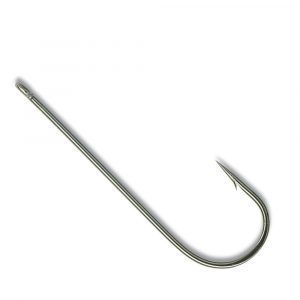 Tronixpro Aberdeen£2.99
Tronixpro Aberdeen£2.99 -
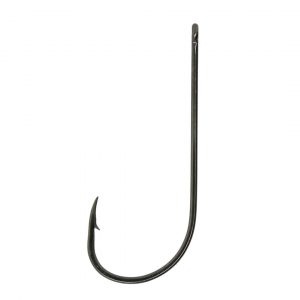 Tronixpro T31 Fine Surf Straight Hook£2.99 – £11.99
Tronixpro T31 Fine Surf Straight Hook£2.99 – £11.99
Baits
Both blow and black lugworm work well in the rougher seas, as will fresh peeler crab if you can get it. Other baits to use are fresh mussels, which naturally can be deadly close to seed mussel beds, razorfish which get washed out of the sand in rougher weather, and queen cockle if you get the chance to pick these up on the shoreline after a big gale has churned them out of the sand and washed them inshore. The other top bait is frozen mackerel strip. It’s a much-maligned bait for flounder, yet is one of the most successful.
King rag will take the odd flounder, but generally speaking, it is a secondary bait and in some areas gets very few bites.
Something to try is to tip lugworm baits with razorfish, crab, mussel, or queen cockle. For some reason, flounder love a combination bait. In the post-Christmas period, if you can get a few snake white ragworm, then try these as they can be killers.
Tactics
As mentioned, your chances improve if you locate the deeper holes in the estuary channels, which is where these flounder like to sit and maybe acclimatise to the more open sea conditions. Also put baits tight to the seed mussel beds or edge of any rougher ground.
On the beaches, take note of where the main inner surf tables start to break and try to cast just beyond these to where the water looks slightly calmer due to increased depth. This is where the big flounder like to hold up and feed.
It always pays to fish the deeper parts of the beach at this time of year. Look for areas where the surf pattern is closer to shore as this notes there is deeper water closer in just behind the surf tables and the big flounder seek these out.
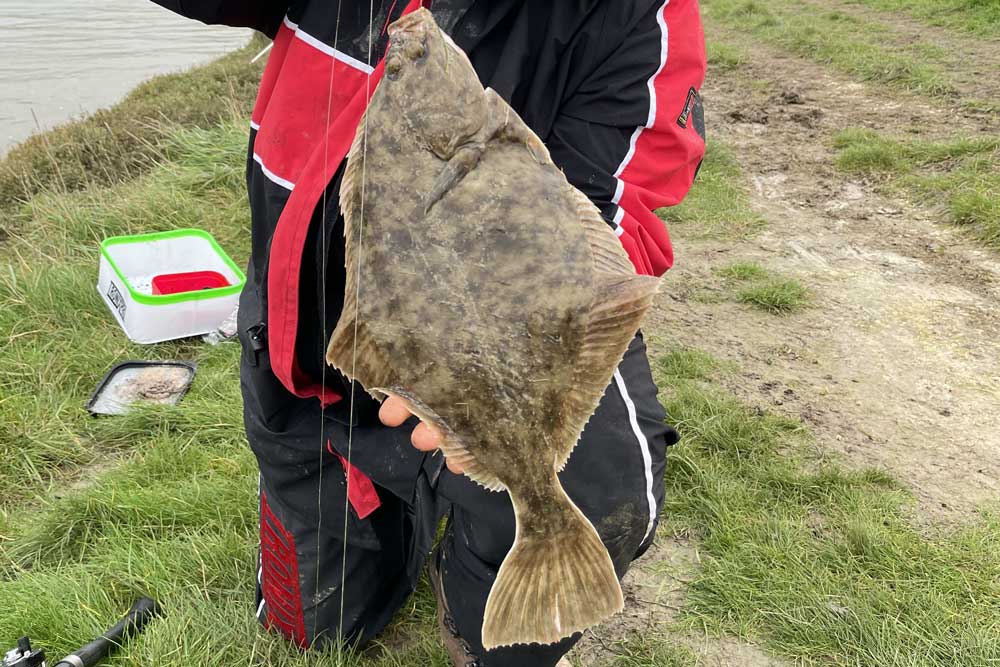
These bigger flounder seem to be lazier at this time of year and won’t chase baits that are moving a lot in the tide and waves. To combat this and keep a bait tight to the seabed, add a single or double SSG split shot just above the hook. This stops the bait being lifted as much as a wave passes overhead and makes for a more static target for the fish to hit.
These winter flounder don’t always move off with the bait and register a bite on the rod tip. You only know you’ve got one on when you reel in to re bait.
In these rougher seas, use a bigger bait, but don’t leave it out longer than 20-minutes so that there is a good scent trail leeching out of it. The flounder only follow up strong scent trails, not weak ones.


